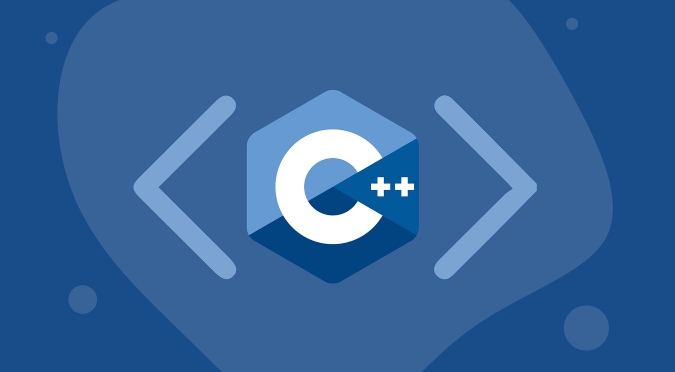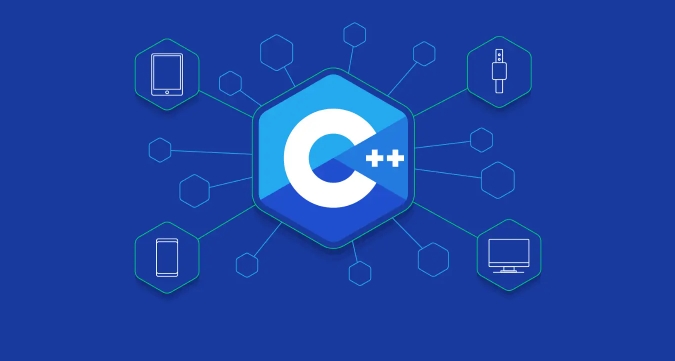The "const" at the end of a C member function means the function promises not to modify the object’s state. It allows the function to be called on const objects, ensures read-only access to member variables, and improves code safety and clarity. Key points: 1) The this pointer becomes a const pointer. 2) Non-mutable members cannot be modified. 3) Const functions can be called on const instances. 4) Mutable members can still be changed. 5) Overloading based on constness is possible. Proper declaration requires the const keyword in both the class declaration and function definition.

A const member function in C is a function that guarantees it won’t modify any of the object’s data members. When you declare a member function as const, you're telling both the compiler and other developers that this function can be called on a const object, and it won't change the state of that object.

This is especially useful when working with const objects or passing objects by const reference — you want to ensure that certain methods can still be safely called without altering the object.

What does "const" at the end of a function mean?
Putting const after a member function's parameter list means that the function promises not to change the internal state of the object:
class MyClass {
public:
int getValue() const;
private:
int value_;
};In this example, getValue() is a const member function. It can be called even on a const instance of MyClass.

Key points:
- The
thispointer inside a const function becomes a pointer to a const object. - You cannot modify non-mutable member variables inside a const function.
- If a function doesn’t need to change the object, it should be made const — it increases usability and clarity.
Why use const member functions?
Const correctness improves code safety and readability. Here’s why it matters:
- Allows calling functions on const objects: Without const functions, you couldn’t call even read-only operations on const instances.
- Enforces immutability: It helps prevent accidental changes to object state.
- Improves optimization opportunities: Compilers can make better assumptions about const functions.
- Better interface design: Signals intent clearly to users of your class.
For example:
MyClass obj; const MyClass c_obj; obj.getValue(); // OK c_obj.getValue(); // Also OK *only* if getValue() is const
If getValue() wasn’t marked const, the second line would result in a compilation error.
What can and can’t you do inside a const function?
Inside a const member function:
- ? Access member variables (but not change them)
- ? Call other const member functions
- ? Return copies or const references to internal data
But you can’t:
- ? Modify regular member variables
- ? Call non-const member functions
- ? Change the state of the object (unless using
mutable)
One exception: if a member variable is declared mutable, it can still be modified inside a const function. This is useful for things like caching or internal counters that don’t affect the logical constness of an object.
Example:
class Logger {
public:
void log(const std::string& message) const {
call_count_; // allowed because call_count_ is mutable
std::cout << message << std::endl;
}
private:
mutable int call_count_ = 0;
};How to declare and define const functions properly
When defining a const function outside the class declaration, you must include the const keyword in both the declaration and the definition:
Header (declaration):
class MyClass {
public:
int getValue() const;
};Implementation (definition):
int MyClass::getValue() const {
return value_;
}If you forget const in the definition, the compiler will treat it as a different function — leading to errors.
Also, remember:
- Overloading based on constness is possible. For example, you can have both
T& operator[] (size_t)andT operator[] (size_t) const. - Const and non-const versions can behave differently, but should ideally provide consistent results.
Const member functions are a core part of writing robust and maintainable C . They help enforce good practices around object state and improve how your classes interact with const contexts. Once you get used to marking functions as const where appropriate, it becomes a natural part of clean C coding habits.
That’s basically it — nothing too fancy, but something easy to overlook when first learning C .
The above is the detailed content of What is a const member function in C ?. For more information, please follow other related articles on the PHP Chinese website!

Hot AI Tools

Undress AI Tool
Undress images for free

Undresser.AI Undress
AI-powered app for creating realistic nude photos

AI Clothes Remover
Online AI tool for removing clothes from photos.

Clothoff.io
AI clothes remover

Video Face Swap
Swap faces in any video effortlessly with our completely free AI face swap tool!

Hot Article

Hot Tools

Notepad++7.3.1
Easy-to-use and free code editor

SublimeText3 Chinese version
Chinese version, very easy to use

Zend Studio 13.0.1
Powerful PHP integrated development environment

Dreamweaver CS6
Visual web development tools

SublimeText3 Mac version
God-level code editing software (SublimeText3)

Hot Topics
 C Destructors code samples
Jun 13, 2025 am 12:04 AM
C Destructors code samples
Jun 13, 2025 am 12:04 AM
The destructor in C is used to free the resources occupied by the object. 1) They are automatically called at the end of the object's life cycle, such as leaving scope or using delete. 2) Resource management, exception security and performance optimization should be considered during design. 3) Avoid throwing exceptions in the destructor and use RAII mode to ensure resource release. 4) Define a virtual destructor in the base class to ensure that the derived class objects are properly destroyed. 5) Performance optimization can be achieved through object pools or smart pointers. 6) Keep the destructor thread safe and concise, and focus on resource release.
 C Polymorphism : is function overloading a kind of polymorphism?
Jun 20, 2025 am 12:05 AM
C Polymorphism : is function overloading a kind of polymorphism?
Jun 20, 2025 am 12:05 AM
Yes, function overloading is a polymorphic form in C, specifically compile-time polymorphism. 1. Function overload allows multiple functions with the same name but different parameter lists. 2. The compiler decides which function to call at compile time based on the provided parameters. 3. Unlike runtime polymorphism, function overloading has no extra overhead at runtime, and is simple to implement but less flexible.
 What Are the Different Kinds of Polymorphism in C ? Explained
Jun 20, 2025 am 12:08 AM
What Are the Different Kinds of Polymorphism in C ? Explained
Jun 20, 2025 am 12:08 AM
C has two main polymorphic types: compile-time polymorphism and run-time polymorphism. 1. Compilation-time polymorphism is implemented through function overloading and templates, providing high efficiency but may lead to code bloating. 2. Runtime polymorphism is implemented through virtual functions and inheritance, providing flexibility but performance overhead.
 How to Implement Polymorphism in C : A Step-by-Step Tutorial
Jun 14, 2025 am 12:02 AM
How to Implement Polymorphism in C : A Step-by-Step Tutorial
Jun 14, 2025 am 12:02 AM
Implementing polymorphism in C can be achieved through the following steps: 1) use inheritance and virtual functions, 2) define a base class containing virtual functions, 3) rewrite these virtual functions by derived classes, and 4) call these functions using base class pointers or references. Polymorphism allows different types of objects to be treated as objects of the same basis type, thereby improving code flexibility and maintainability.
 C : Is Polymorphism really useful?
Jun 20, 2025 am 12:01 AM
C : Is Polymorphism really useful?
Jun 20, 2025 am 12:01 AM
Yes, polymorphisms in C are very useful. 1) It provides flexibility to allow easy addition of new types; 2) promotes code reuse and reduces duplication; 3) simplifies maintenance, making the code easier to expand and adapt to changes. Despite performance and memory management challenges, its advantages are particularly significant in complex systems.
 C Destructors: Common Errors
Jun 20, 2025 am 12:12 AM
C Destructors: Common Errors
Jun 20, 2025 am 12:12 AM
C destructorscanleadtoseveralcommonerrors.Toavoidthem:1)Preventdoubledeletionbysettingpointerstonullptrorusingsmartpointers.2)Handleexceptionsindestructorsbycatchingandloggingthem.3)Usevirtualdestructorsinbaseclassesforproperpolymorphicdestruction.4
 What Are the Various Forms of Polymorphism in C ?
Jun 20, 2025 am 12:21 AM
What Are the Various Forms of Polymorphism in C ?
Jun 20, 2025 am 12:21 AM
C polymorphismincludescompile-time,runtime,andtemplatepolymorphism.1)Compile-timepolymorphismusesfunctionandoperatoroverloadingforefficiency.2)Runtimepolymorphismemploysvirtualfunctionsforflexibility.3)Templatepolymorphismenablesgenericprogrammingfo
 Polymorphism in C : A Comprehensive Guide with Examples
Jun 21, 2025 am 12:11 AM
Polymorphism in C : A Comprehensive Guide with Examples
Jun 21, 2025 am 12:11 AM
Polymorphisms in C are divided into runtime polymorphisms and compile-time polymorphisms. 1. Runtime polymorphism is implemented through virtual functions, allowing the correct method to be called dynamically at runtime. 2. Compilation-time polymorphism is implemented through function overloading and templates, providing higher performance and flexibility.






